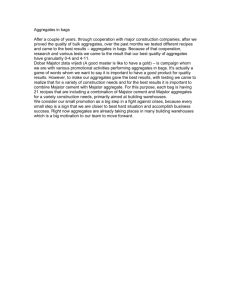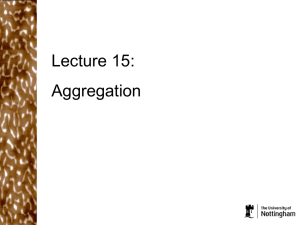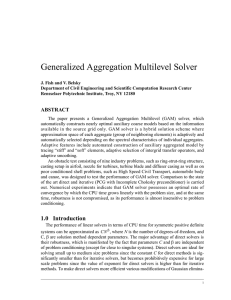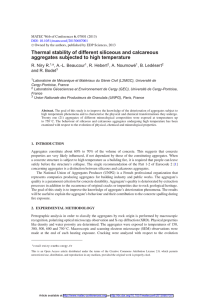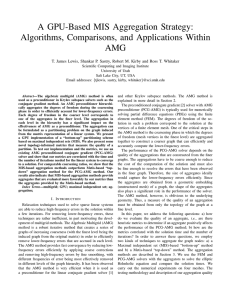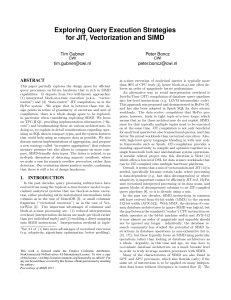Linear aggregation and liquid-crystalline order: comparison of
advertisement
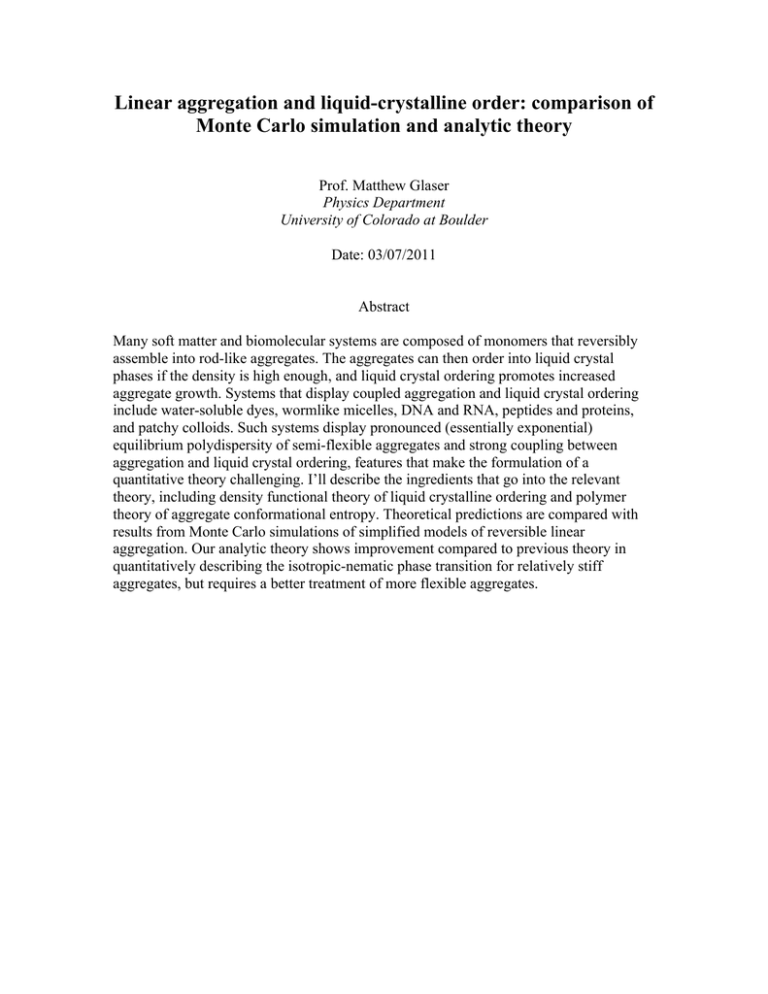
Linear aggregation and liquid-crystalline order: comparison of Monte Carlo simulation and analytic theory Prof. Matthew Glaser Physics Department University of Colorado at Boulder Date: 03/07/2011 Abstract Many soft matter and biomolecular systems are composed of monomers that reversibly assemble into rod-like aggregates. The aggregates can then order into liquid crystal phases if the density is high enough, and liquid crystal ordering promotes increased aggregate growth. Systems that display coupled aggregation and liquid crystal ordering include water-soluble dyes, wormlike micelles, DNA and RNA, peptides and proteins, and patchy colloids. Such systems display pronounced (essentially exponential) equilibrium polydispersity of semi-flexible aggregates and strong coupling between aggregation and liquid crystal ordering, features that make the formulation of a quantitative theory challenging. I’ll describe the ingredients that go into the relevant theory, including density functional theory of liquid crystalline ordering and polymer theory of aggregate conformational entropy. Theoretical predictions are compared with results from Monte Carlo simulations of simplified models of reversible linear aggregation. Our analytic theory shows improvement compared to previous theory in quantitatively describing the isotropic-nematic phase transition for relatively stiff aggregates, but requires a better treatment of more flexible aggregates.


